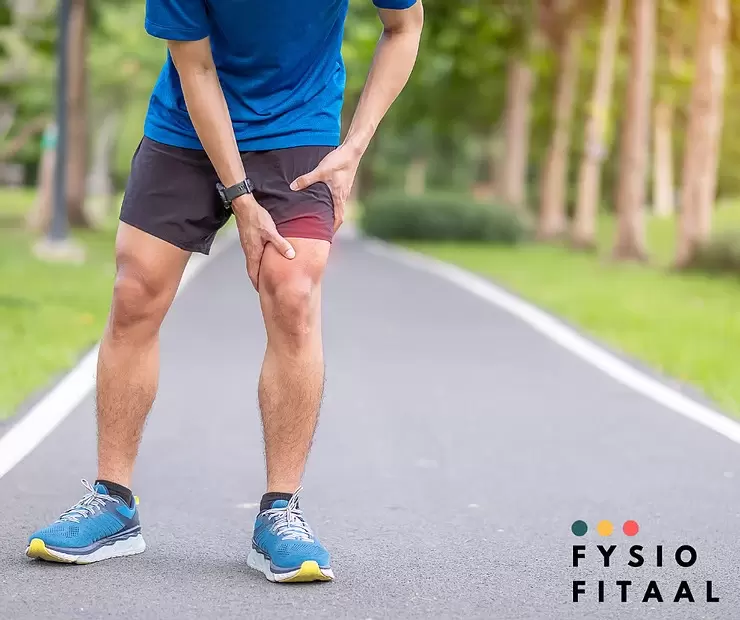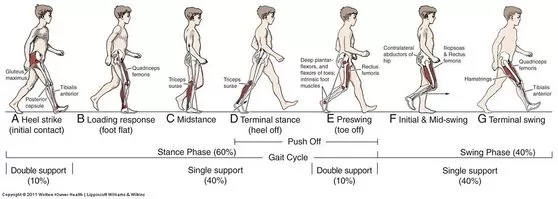Walking pattern after knee surgery
Operations to the knee are common and the extent to which they are carried out is only increasing. In recent years, there has been growing attention to anterior cruciate ligament operations and rehabilitations. This is because we see more and more (young) patients within the walls of orthopaedics as well as physiotherapy where such knee injuries present. Annually, more than 9,000 cruciate ligament operations are now performed in the Netherlands alone. Depending on the level of sport, we see that around 3% of amateur athletes suffer a cruciate ligament injury, and this rises to as much as 15% in elite sports. Fortunately, today we have a lot of scientific research that tells us how best to treat this kind of injury treat. We see in the main target group: the young dynamic athlete, that almost everyone undergoes surgery. This is because it achieves the best long-term results when it comes to knee function and retention.

Yet it is a regular occurrence that pains persist for a longer period of time after knee surgery. Scientific literature shows us that this could be due to changes in gait pattern after surgery. Of course, there are always several factors that can play a role in pain symptoms, but in this blog we'd like to tell you more about the influence of the running on knee function and pain.
Are you due for knee surgery soon, or have you perhaps already undergone it? If so, you will probably recognise that walking is not easy at first. After surgery the knee is swollen, stiff and you notice that it is often difficult to move. The latter is partly due to the swelling and stiffness, but also largely due to muscle inhibition. The activity of the muscles in the upper leg (and mainly the quadriceps) decreases after surgery. The body does this out of a kind of protective mechanism, as it does not understand that we have operated to perform a cruciate ligament reconstruction. Consequently, all this makes walking not go smoothly. Fortunately, we see that all these symptoms do diminish over time and thus walking will get better and better. Still, we see in the literature that it running in some cases does not return to normal all by itself. If we walk abnormally, it sounds pretty logical that this could cause symptoms, right? Especially when we know that in 60% of us running there is support on only 1 leg.
To be able to say something about the normal or abnormal nature of a running, it is of course important to know what a gait pattern should look like. We can therefore divide walking into different phases, all with their own characteristics.
To map how you walk, we can use video analysis. This method is the easiest to apply in daily practice. However, it is important to look closely at what we see.

The main gait abnormalities seen in people after knee surgery are
- Lack of full extension of the knee (0 degrees) at heelstrike.
- Lack of full extension of the knee (0 degrees) at midstance.
- Overactivity of hamstrings and adductor longus at the end of swing phase/beginning of stance phase.
If we look critically at all the exercises that recur in the first phase of rehabilitation, we see that almost all have a link to learning to walk properly again.
Indeed, you are at this stage
1; agility
2; control of muscle tightening (especially the quadriceps)
3; high-quality stretching
4; Maintain mobility and strength in the lower leg/ankle
5; Maintain mobility and strength in the hip muscles
6; getting rest in the knee
It is important that we have a high-quality running know, recognise abnormalities of this and that we look beyond the knee. Indeed, know that an abnormal running could just as easily arise from changes around the hip or only. Have you achieved a high-quality walking pattern with a quiet knee? Only then is it responsible to move around without a walking aid. Sure, it is possible to propel yourself in a less efficient way, but in many cases this causes long-term complaints.

